Are you ready to delve into the heart of modern manufacturing technology? Welcome to the world of CNC Control Systems, where precision and automation meet to revolutionize industries. In this comprehensive guide, I'll walk you through the intricate workings of CNC control systems, their components, diverse types, real-world applications, troubleshooting and maintenance tips, the latest trends in CNC technology, and even a special recommendation for CNC machining services.
Welcome to the heart of modern manufacturing technology - the CNC Control System. In this section, we'll dive deeper into the fundamental aspects of CNC control systems, their importance, and the essential components that make them tick.
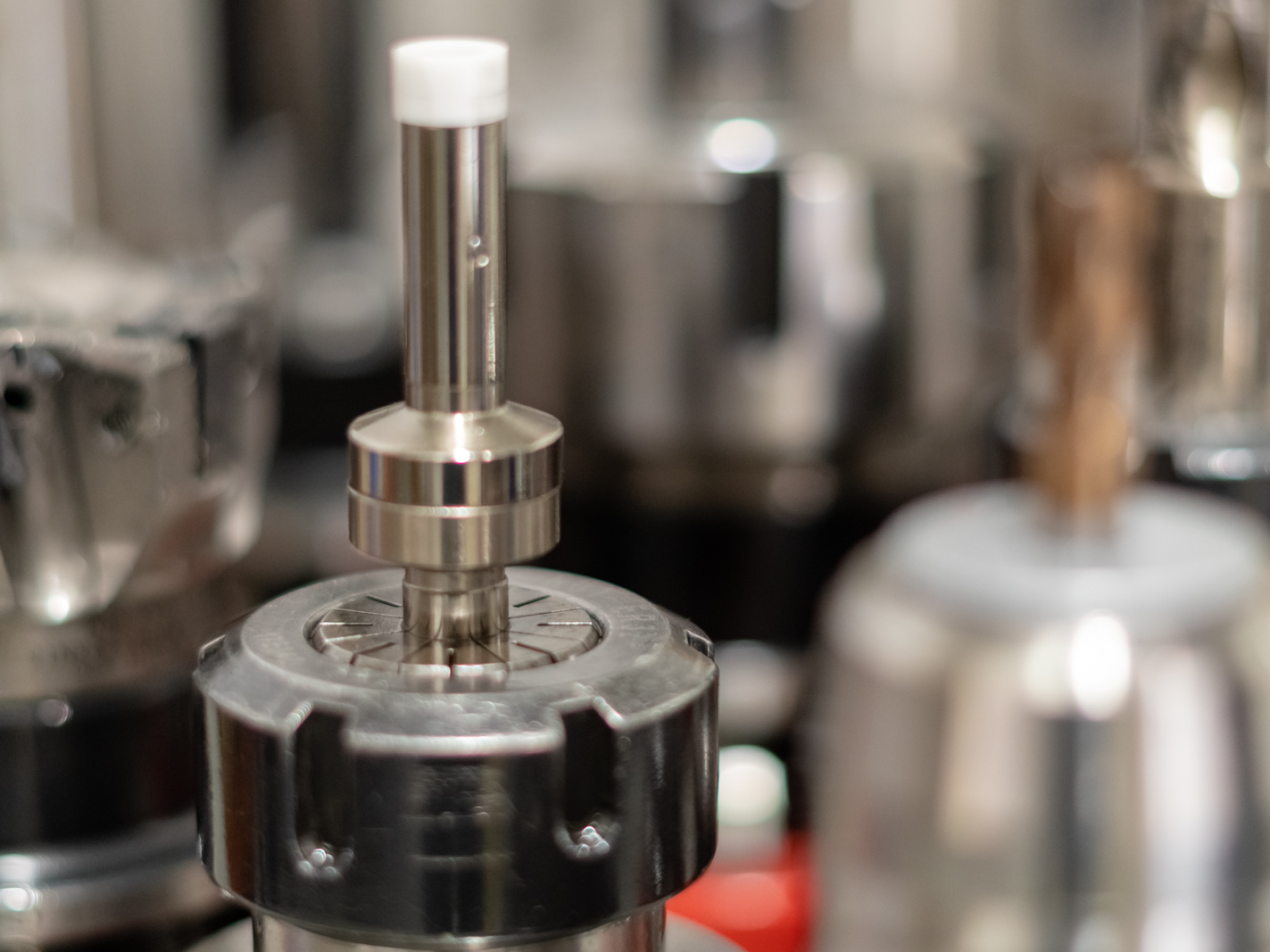
CNC (Computer Numerical Control) systems are the unsung heroes of manufacturing. They are the driving force behind precision, automation, and consistency. Understanding the significance of CNC control systems is the first step in appreciating their role in modern industry.
These systems offer a level of control and precision that human operators alone could never achieve. They make it possible to create complex parts and products with extraordinary accuracy, opening the door to endless possibilities in various industries, from aerospace to medical devices and beyond.
| Benefit | Description |
|---|---|
| Precision | CNC systems offer unparalleled precision, resulting in high-quality products with minimal error. |
| Automation | Automation reduces the need for human intervention, making manufacturing processes more efficient. |
| Consistency | CNC systems deliver consistent results, ensuring that each product meets the same exacting standards. |
| Complex Geometry | They enable the production of intricate and complex parts, shapes, and designs that would be impossible manually. |
| Flexibility | CNC systems can adapt to different tasks, making them suitable for a wide range of applications. |
To grasp the inner workings of CNC control systems, let's take a closer look at their core components. These elements work in harmony, each playing a crucial role in the system's overall functionality.
| Component | Function |
|---|---|
| Controller | The "brain" of the system that interprets user input and generates commands for the machine. |
| Drivers | Amplify the control signals generated by the controller to power and control the motors. |
| Motors | Execute the physical movements and tasks, such as cutting, milling, or 3D printing. |
| Input Devices | Act as the interface between the operator and the system, receiving commands and feedback. |
The Controller: In-depth
The controller, often considered the "brain" of the CNC system, is responsible for interpreting the user's input and generating the corresponding commands for the machine. It's a highly specialized computer that processes complex algorithms to ensure precise and efficient operation.
| Controller Type | Features |
|---|---|
| Open-Loop | Provides basic control with limited feedback, ideal for simple tasks. |
| Closed-Loop | Utilizes feedback systems (encoders) to monitor and adjust operations in real-time for accuracy. |
| PC-Based | Integrates with personal computers for versatility and ease of programming. |
The choice of controller type depends on the complexity of the task and the desired level of control.
The Drivers: Amplifying Power
Drivers are essential because they amplify the control signals generated by the controller to power and control the motors. Think of them as translators that ensure the commands from the controller are translated into the physical movements of the machine.
| Driver Type | Characteristics |
|---|---|
| Stepper Driver | Utilizes step pulses to control motors, making them suitable for precise positioning. |
| Servo Driver | Offers more continuous and accurate control, making it ideal for high-speed applications. |
The Motors: Movers and Shakers
The motors are the components responsible for executing the actual physical movements. Two common types of motors used in CNC systems are stepper motors and servo motors.
| Parameter | Stepper Motors | Servo Motors |
|---|---|---|
| Precision | High precision for precise positioning. | Extremely precise, even at high speeds. |
| Speed | Slower speed compared to servo motors. | Faster speeds make them ideal for rapid movements. |
| Cost | Cost-effective, making them suitable for many applications. | Generally more expensive. |
The Input Devices: Communicators
Input devices serve as the communicators between the operator and the CNC system. Operators use these devices to input instructions, often in the form of G-code, and receive feedback about the machine's status and performance.
| Input Device | Description |
|---|---|
| Keyboard | Operators can manually input commands and G-code sequences. |
| Mouse | Used for navigating and selecting options on the control interface. |
| Touchscreen | Provides an intuitive interface for controlling the machine. |
Understanding these core components is essential for getting a clear picture of how CNC control systems operate. With the controller as the "brain," drivers as the "translators," motors as the "movers," and input devices as the "communicators," you'll have a solid foundation for comprehending the intricacies of CNC technology.
Key Takeaway: CNC control systems are significant for their precision, automation, and consistency. The core components include the controller, drivers, motors, and input devices, each playing a critical role in the system's functionality.
In this section, we'll delve deeper into the various types of CNC control systems, exploring their characteristics, advantages, and applications. We'll compare Numerical Control (NC), Computer Numerical Control (CNC), and Programmable Logic Controllers (PLC) to help you understand which type is best suited for specific tasks.
Numerical Control (NC) systems were the precursors to CNC systems. They rely on pre-programmed instructions to control machine tools. While they lack the adaptability and versatility of CNC systems, they are still used in some applications.
Pre-programmed: NC systems require operators to input detailed code sequences manually.
Limited Flexibility: Changes or adjustments to tasks can be challenging due to their pre-programmed nature.
Simplicity: They are straightforward and easier to operate compared to CNC systems.
| Aspect | Pros | Cons |
|---|---|---|
| Simplicity | Easy to learn and operate | Limited flexibility for complex tasks |
| Cost-Effective | Cost-effective due to their simplicity | Manual code input can be time-consuming |
| Suitable Applications | Ideal for simple, repetitive tasks | Inefficient for complex, rapidly changing tasks |
Numerical Control systems are a suitable choice for tasks where automation is not a top priority and where simplicity and cost-effectiveness are valued.
Computer Numerical Control (CNC) systems represent the pinnacle of precision manufacturing technology. They combine the power of computers with intricate control mechanisms to execute complex tasks with exceptional accuracy.
Computer-Controlled: CNC systems rely on computer technology to execute tasks, offering precision and versatility.
Real-Time Adaptability: Changes to tasks can be made in real-time, enhancing flexibility.
Complexity: They can handle a wide range of complex tasks and intricate designs.
| Aspect | Pros | Cons |
|---|---|---|
| Precision and Versatility | Exceptional precision and versatility | Higher initial investment and operational costs |
| Real-Time Adaptability | Real-time adaptability for task adjustments | Requires skilled operators for programming |
| Suitable Applications | Ideal for complex and highly precise tasks | May be overkill for simple and repetitive tasks |
CNC systems are the go-to choice for industries that demand precision, complex designs, and adaptability. They excel in applications where product quality is paramount.
Programmable Logic Controllers (PLCs) are specialized control systems that excel in discrete automation. They are not as comprehensive as CNC systems but are ideal for tasks where on/off states and precise control are crucial.
On/Off Control: PLCs excel in managing tasks with binary outcomes, such as machinery start/stop operations.
Sequential Logic: They are proficient in executing sequences of actions based on predetermined conditions.
Industrial Focus: PLCs are mainly used in industrial settings for automation and control.
| Aspect | Pros | Cons |
|---|---|---|
| Reliable Control | Reliable on/off control for machinery and processes | Limited versatility for complex tasks |
| Durability | Built to withstand industrial environments | Limited adaptability to real-time changes |
| Suitable Applications | Suitable for tasks requiring sequential logic | Not suitable for high-precision applications |
PLCs are crucial in industries where discrete control is needed, and the ability to manage sequential operations is vital.
Selecting the right control system is crucial to the success of any project. To make an informed decision, consider the following factors:
Complexity of the Task: Determine whether your task requires precision, adaptability, or simple on/off control.
Budget: Evaluate the initial investment and operational costs associated with each control system.
Operator Skill: Consider the skill level of your operators and the availability of programming expertise.
Application: Tailor your choice to your specific industry and application requirements.
In summary, understanding the different types of control systems allows you to make an informed decision that aligns with the unique demands of your projects. Whether you opt for NC, CNC, or PLC, each has its place in modern industry, making precision and automation accessible across various applications.
Key Takeaway: Different types of CNC control systems include NC, CNC, and PLC, each with distinct characteristics and applications. The choice of system depends on the complexity of the task, budget, operator skill, and specific industry requirements.
The true power of CNC control systems lies in their ability to revolutionize a wide array of industries. In this section, we'll delve into specific applications, highlighting how CNC technology enhances productivity, precision, and quality.
Metalworking is one of the primary domains where CNC control systems have made a profound impact. Whether it's cutting, milling, or welding, CNC systems bring an exceptional level of precision to metal fabrication processes.
CNC Machining: CNC machines are utilized to shape, cut, and carve metal parts with an extraordinary degree of accuracy. This includes components for automotive, aerospace, and industrial equipment.
Laser Cutting: CNC-controlled laser cutting systems enable the precise cutting of intricate metal shapes, enhancing efficiency and minimizing waste.
Welding Automation: CNC welding machines ensure that welds are consistently strong and accurate, vital in applications where structural integrity is critical.
| Benefit | Description |
|---|---|
| Precision | CNC technology ensures that metal parts meet exact specifications, reducing errors and waste. |
| Efficiency | Automated processes and real-time adjustments optimize production speed and reduce downtime. |
| Complex Shapes | CNC systems can produce intricate and complex metal shapes that would be impractical manually. |
| Quality Assurance | Consistency in welding and machining processes results in high-quality metal components. |
CNC control systems have opened up new possibilities in woodworking by enabling intricate carvings, precise joinery, and flawless production of furniture and decorative items.
Furniture Manufacturing: CNC technology simplifies the production of intricate furniture components, ensuring precise cuts and joinery.
Cabinetry: Cabinet makers rely on CNC-controlled machines to create precise and customized cabinet parts, optimizing efficiency and quality.
Artistic Woodworking: Intricate carvings, ornamental details, and personalized wood art are now within reach with CNC systems.
| Benefit | Description |
|---|---|
| Precision | CNC machines ensure that each piece of wood is cut with precision, leading to seamless assembly. |
| Customization | CNC systems facilitate customization and personalization, allowing for unique woodworking projects. |
| Time Efficiency | Automation accelerates woodworking tasks, reducing production times and labor costs. |
| Complex Designs | CNC technology brings intricate designs and carvings to life, unlocking creative possibilities. |
In the realm of stone cutting and shaping, CNC control systems have transformed the way artisans and engineers approach their work. These systems enable the creation of intricate sculptures and precise architectural elements.
Architectural Stonework: CNC systems cut, carve, and shape stone components used in architectural projects, adding a touch of elegance and precision to structures.
Monument and Sculpture Fabrication: Stone monuments and sculptures come to life with CNC technology, ensuring each detail is faithfully reproduced.
Countertop Production: Precision in stone cutting is essential for countertops, and CNC systems guarantee an accurate fit in kitchens and bathrooms.
| Benefit | Description |
|---|---|
| Precision | CNC technology ensures that stone components are cut with extreme precision, reducing waste. |
| Replication of Details | Stone sculptures and architectural elements are accurately replicated, preserving intricate details. |
| Time and Cost Efficiency | CNC systems optimize production processes, saving both time and labor costs. |
| Versatility | CNC machines can be programmed for a variety of stone types and shapes, enhancing versatility. |
The 3D printing industry has been transformed by CNC control systems. These systems play a crucial role in layer-by-layer additive manufacturing, ensuring that intricate and detailed 3D objects are produced with precision.
Prototyping: CNC-controlled 3D printers are used for rapid prototyping, allowing engineers and designers to test their designs quickly.
Medical Models: The medical field utilizes 3D printing with CNC control for producing anatomical models, implants, and prosthetics with a high degree of precision.
Aerospace Components: 3D printing in aerospace benefits from CNC systems to create lightweight and highly accurate components.
| Benefit | Description |
|---|---|
| High Precision | CNC-controlled 3D printers offer superior precision, ensuring accurate and detailed prints. |
| Rapid Prototyping | The combination of 3D printing and CNC technology allows for swift prototyping and design iterations. |
| Medical Advancements | 3D printing in medicine relies on CNC control to create customized and precise medical solutions. |
| Aerospace Innovation | CNC-controlled 3D printing is used in aerospace for intricate and lightweight component production. |
The applications of CNC control systems are vast and continue to grow, enhancing productivity, precision, and quality in numerous industries.
Key Takeaway: CNC control systems have made significant impacts in metalworking, woodworking, stone cutting, and 3D printing. These systems bring precision and efficiency to various applications, ensuring consistent quality and intricate designs.
Maintaining CNC control systems is essential to ensure they operate smoothly and deliver consistent results. In this section, we'll discuss common issues that may arise with CNC systems and provide guidance on troubleshooting and maintenance.
Even with the most advanced technology, issues can occur in CNC control systems. Understanding how to identify and resolve common problems is crucial for maintaining optimal performance.
Overheating Motors: Overheating can lead to motor failure and poor machine performance. It often results from overuse or poor ventilation.
Electrical Circuit Problems: Electrical issues can disrupt communication between components, leading to erratic behavior or system malfunctions.
Limit Switch Problems: Limit switches are used to define the machine's working boundaries. Issues with these switches can result in incorrect movements or stoppages.
| Issue | Symptoms | Troubleshooting Steps |
|---|---|---|
| Overheating Motors | Motor temperature rises significantly during operation. | Improve machine ventilation and reduce workload. |
| Electrical Circuit Problems | Inconsistent or erratic machine behavior. | Inspect wiring for loose connections and damage. |
| Limit Switch Problems | The machine exceeds its defined limits or stops unexpectedly. | Check limit switch positioning and wiring. |
Preventive maintenance is key to extending the lifespan and efficiency of CNC control systems. A well-maintained system is less likely to encounter issues or breakdowns.
Lubrication: Regularly lubricate moving parts and bearings to reduce friction and wear. Use appropriate lubricants according to the manufacturer's recommendations.
Cleaning: Keep the machine and its components clean to prevent the buildup of debris or dust that can affect performance.
Calibration: Periodically calibrate the CNC system to ensure its accuracy and precision.
Backup Systems: Regularly back up critical data and software settings to prevent data loss.
Component Inspection: Inspect the condition of components, such as cables, connectors, and motors, to identify wear or damage.
Software Updates: Stay up-to-date with software updates and firmware to benefit from improvements and bug fixes.
Operator Training: Ensure that operators are well-trained and knowledgeable about the system's proper operation and maintenance.
Scheduled Maintenance: Create a schedule for planned maintenance tasks, adhering to the manufacturer's guidelines.
| Maintenance Practice | Frequency | Benefits |
|---|---|---|
| Lubrication | Regular intervals | Reduces friction and wear, extending component life. |
| Cleaning | Regular intervals | Prevents debris buildup and maintains optimal performance. |
| Calibration | Periodic (as recommended) | Ensures accuracy and precision in operations. |
| Backup Systems | Regularly | Prevents data loss and system recovery issues. |
| Component Inspection | Regular intervals | Identifies wear or damage before they lead to failures. |
| Software Updates | As updates become available | Takes advantage of improvements and bug fixes. |
| Operator Training | Ongoing | Ensures proper system operation and care. |
| Scheduled Maintenance | Follow manufacturer's guidelines | Proactive upkeep to prevent unexpected failures. |
Implementing regular maintenance practices offers numerous benefits to CNC control systems and the operators who rely on them:
Extended System Lifespan: Proper maintenance ensures that components last longer, reducing the need for costly replacements.
Reduced Downtime: Regular maintenance can prevent unexpected breakdowns, reducing downtime and ensuring a steady workflow.
Optimal Performance: Well-maintained systems operate with optimal precision and efficiency, resulting in higher quality output.
Cost Savings: Preventing major breakdowns and repairs can lead to significant cost savings over time.
Safety: Maintenance tasks can identify and address safety issues before they become hazards.
By following a proactive maintenance routine, operators can keep CNC control systems in peak condition and maximize their utility.
Key Takeaway: Troubleshooting and regular maintenance are crucial for keeping CNC control systems in excellent working order. Identifying and resolving common issues, along with adhering to preventive maintenance practices, ensures optimal system performance and longevity.
CNC machine tools rely on specific control devices to manage their operations effectively. These devices provide operators with the means to interact with the CNC system and oversee the tasks at hand. In this section, we'll dive into the primary control devices and their functions.
Panel control is a central interface for operating and monitoring CNC machine tools. It serves as the primary control hub for machine operators, offering real-time access to various machine parameters and settings.
Control Parameters: Operators can adjust and fine-tune critical machine parameters such as speed, feed rate, and toolpath.
Start/Stop Operations: Panel control enables the initiation and cessation of machining processes, providing direct control over machine activity.
Emergency Stop: In the event of a malfunction or safety concern, an emergency stop button on the panel control can quickly halt machine operations.
| Function | Description |
|---|---|
| Control Parameters | Adjusts critical machine settings to optimize performance and precision. |
| Start/Stop Operations | Initiates and halts machining processes, providing real-time control over machine activity. |
| Emergency Stop | Allows immediate cessation of machine operations in emergency situations. |
Handwheels provide a manual, fine-tuned approach to controlling CNC machine tools. Operators can use handwheels for precise adjustments during setup and operation.
Manual Operation: Handwheels allow operators to manually control the machine's movements, making fine adjustments with exceptional precision.
Jogging: Operators can use the handwheel to jog the machine, moving it incrementally in different directions, which is useful for positioning and setup.
Toolpath Verification: Handwheels aid in verifying toolpaths and ensuring that the machine follows the desired route accurately.
| Function | Description |
|---|---|
| Manual Operation | Enables precise manual control of the machine's movements, useful for fine adjustments. |
| Jogging | Allows incremental movements for positioning and setup, ensuring accurate toolpath verification. |
| Toolpath Verification | Supports the validation of toolpaths, helping ensure the machine's alignment with the intended route. |
Some CNC systems are equipped with remote control capabilities, allowing operators to oversee machine operations from a distance. Remote control enhances safety, convenience, and operational flexibility.
Remote Monitoring: Operators can monitor machine activities and receive status updates remotely, enhancing situational awareness.
Adjustments: In certain situations, remote control permits adjustments to machine settings and parameters without direct physical access.
Emergency Response: In emergency scenarios, remote control can be used to initiate an emergency stop or implement safety measures from a safe distance.
| Function | Description |
|---|---|
| Remote Monitoring | Enables remote monitoring of machine activities, enhancing situational awareness. |
| Adjustments | Allows remote adjustments to machine settings and parameters for operational flexibility. |
| Emergency Response | Facilitates emergency actions, such as initiating an emergency stop, from a safe remote location. |
Understanding the functions of control devices in CNC machine tools is essential for optimizing machine operations and ensuring precision in various tasks.
Key Takeaway: Control devices like panel control, handwheel control, and remote control play crucial roles in managing CNC machine tools effectively. Panel control provides real-time access to critical parameters, handwheel control offers manual precision, and remote control enhances safety and operational flexibility.
When it comes to CNC machining services, one name stands out for its exceptional quality, precision, and expertise – Richconn. Richconn precision machine shop is a trusted partner for a wide range of industries, offering cutting-edge CNC solutions to meet diverse manufacturing needs.
State-of-the-Art Technology: Richconn invests in the latest CNC technology, including 5 axis cnc machining services, to deliver unparalleled precision and complexity in every project.
Experienced Team: Their team of highly skilled engineers and technicians brings years of experience and expertise to the table, ensuring top-quality results.
Quality Assurance: Richconn is committed to quality, adhering to stringent quality control standards to deliver products that meet and exceed industry requirements.
Versatility: Richconn's CNC machining services cater to a wide range of industries, including aerospace, automotive, medical, and more, highlighting their versatility and adaptability.
Sustainability: Richconn places a strong emphasis on sustainability, implementing energy-efficient practices and waste reduction measures to minimize environmental impact.
Customer-Centric Approach: Richconn values customer satisfaction, providing excellent customer support, transparent communication, and timely project delivery.
Richconn CNC Machining Services offers a comprehensive range of solutions, including:
Precision Machining: Their precision machining capabilities ensure the production of high-precision components, meeting the most demanding specifications.
5-Axis Machining: Richconn's advanced 5-axis machining capabilities allow for the creation of complex geometries in a single setup, reducing production time.
Multi-Tasking Machining: Multi-tasking machines streamline production by performing multiple operations simultaneously, improving efficiency.
Material Expertise: Richconn works with various materials, including metals, plastics, and composites, offering flexibility in material selection.
Prototyping: Richconn is well-equipped to provide rapid prototyping services, allowing for quick design validation and iterations.
Custom Solutions: They offer tailored cnc turning service solutions to meet the unique needs of their clients, ensuring that every project receives personalized attention.
Richconn CNC Machining Services is the go-to choice for businesses seeking high-quality CNC solutions. With their commitment to excellence, state-of-the-art technology, and customer-centric approach, Richconn consistently delivers outstanding results.
Key Takeaway: For top-tier CNC machining services, look no further than Richconn CNC Machining Services. With cutting-edge technology, a skilled team, and a commitment to quality and sustainability, they are the ideal partner for a wide range of industries.
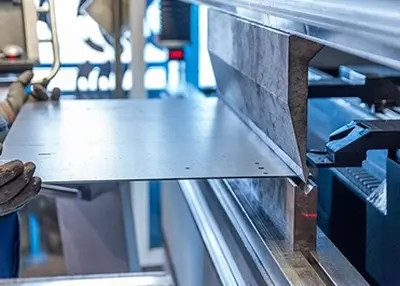 5 Bending and Forming Methods for Sheet MetalDecember 4, 2023Sheet metal refers to a process used to manufacture a variety of metal products, which involves processing sheet metal into the desired shape and size by cutting, stamping, bending, and welding.view
5 Bending and Forming Methods for Sheet MetalDecember 4, 2023Sheet metal refers to a process used to manufacture a variety of metal products, which involves processing sheet metal into the desired shape and size by cutting, stamping, bending, and welding.view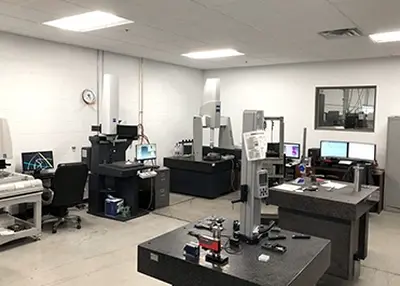 Aero-engine Why the Whole Leaf DiskOctober 23, 2023Aero-engine is the heart of the aircraft, also known as the pearl in the crown of industry, the manufacture of which integrates a lot of cutting-edge technology in modern industry, involving materials, machining, thermodynamics and other fields.view
Aero-engine Why the Whole Leaf DiskOctober 23, 2023Aero-engine is the heart of the aircraft, also known as the pearl in the crown of industry, the manufacture of which integrates a lot of cutting-edge technology in modern industry, involving materials, machining, thermodynamics and other fields.view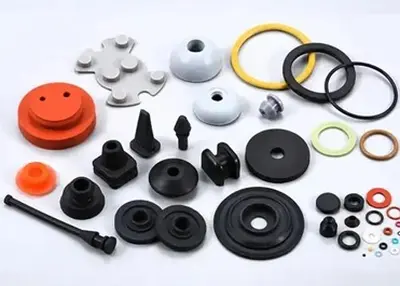 Rubber: Full Analysis of Materials, Processing and Applications (2023 Edition)September 25, 2023In this comprehensive guide, explore the world of Rubber: Materials, Processing, and Applications. From its origins to modern uses, we will delve into the fascinating world of rubber.view
Rubber: Full Analysis of Materials, Processing and Applications (2023 Edition)September 25, 2023In this comprehensive guide, explore the world of Rubber: Materials, Processing, and Applications. From its origins to modern uses, we will delve into the fascinating world of rubber.view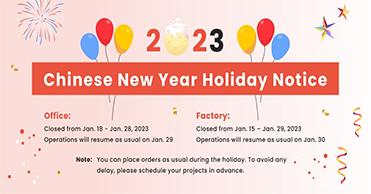 Richconn 2023 Chinese New Year Holiday NoticeDecember 2, 2022November 29, 2022Chinese New Year is approaching! We would like to remind you that Richconn will be on holiday to celebrate our Chinese New Year. For your convenience in arranging your project, please...view
Richconn 2023 Chinese New Year Holiday NoticeDecember 2, 2022November 29, 2022Chinese New Year is approaching! We would like to remind you that Richconn will be on holiday to celebrate our Chinese New Year. For your convenience in arranging your project, please...view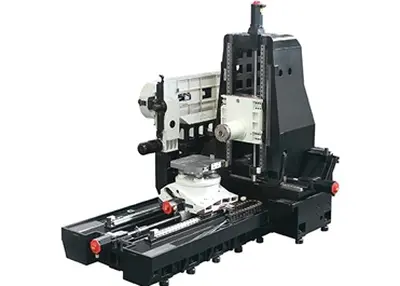 5 Important Facts About 5 Axis Machining | Basics Information, Benefits, Limitations, Applications & TipsFebruary 20, 20245 axis CNC machining technology is important in manufacturing. Learn more about its basics, pros &cons, applications, and tips to enhance your project performance.view
5 Important Facts About 5 Axis Machining | Basics Information, Benefits, Limitations, Applications & TipsFebruary 20, 20245 axis CNC machining technology is important in manufacturing. Learn more about its basics, pros &cons, applications, and tips to enhance your project performance.view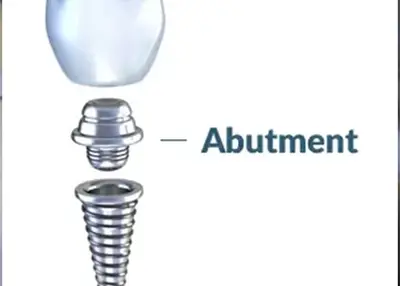 Exploring the World of Medical Machined Parts: Precision in HealthcareNovember 10, 2023In the ever-evolving landscape of healthcare, the role of medical machined parts stands as a testament to precision engineering's indispensable contribution. As the CEO of Richconn, I am thrilled to guide you through an extensive exploration of these critical components.view
Exploring the World of Medical Machined Parts: Precision in HealthcareNovember 10, 2023In the ever-evolving landscape of healthcare, the role of medical machined parts stands as a testament to precision engineering's indispensable contribution. As the CEO of Richconn, I am thrilled to guide you through an extensive exploration of these critical components.view